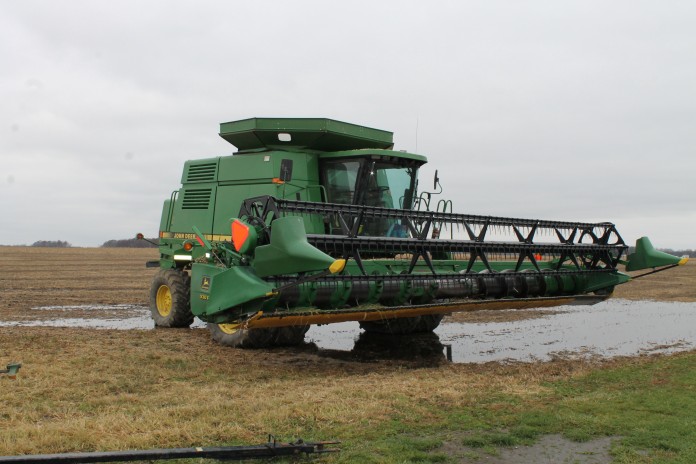The hurricane-generated rains of last week continue to command the harvest process in eastern Ohio. The six inches and more of water reported at some sites has prevented harvest for a week.
Although much of the region will continue to wait for fields to dry, some Trumbull County farmers started again on gravel ground Monday.
It is hard to put a number on the acres or percentage of acres yet to go. Although it felt like the soybeans were under control before the end of the month, in fact I don’t have to drive very far to see a lot of fields still standing.
On ‘average’ pace
USDA reported Monday that the harvest is 86 percent complete in Ohio as of Sunday. The country as a whole is at 93 percent. I think a disproportionate amount of those unharvested beans are in northeastern Ohio, but not by a lot.
It should be noted that the average harvest at this time is 88 percent for Ohio, so we are really at the norm after an early start.
The corn is a similar situation, just later. Ohio has put away 74 percent of the crop, when the average is only 60 percent. We got 10 percent done in the last week.
Last year we were actually only 29 percent done, but that was because of the late start to planting, much of which was done as late as the first week of June.
The U.S. is 95 percent harvested, so harvest is not a national issue, just a local one.
At the elevators
The problem for the elevators is that normal harvest basis never showed up, as western elevators led the way early by bidding up to compete for drought-limited crops.
Now basis is acting like harvest is over, and we are seeing basis levels not normally seen until spring.
Add this to the lack of carry in the futures markets, and the elevators are in for a tough year.
Price trends
Looking at price trends for the last week or so, we see corn at the low end of a trading range that has dominated the market since the last time we got any big news. December corn futures made the high of 7.76 in early October.
The recent low was hit quickly, on the 15th. By the 19th we were back to 7.69, trading a lower USDA carryout number than some thought, but we dropped back down the slope again. Currently we are 7.38 3/4.
November soybeans had a long slide to reality after being pumped up by drought and old-crop supply worries this summer. The high was actually back in early September, then we dropped most of $3. The recent low was the middle of October at 14.84, but we have rebounded recently to as high as 15.77 on Oct. 24.
This Tuesday morning we are at 15.12 3/4.
Decision time
Now is the time when decisions are hard. We have no real potential big news until the January inventory reports give us our final crop size, although we do have USDA reports Friday that could have some impact.
With no news comes fickle markets subject to the whims of Chicago traders.
Now will be the time to forget the highs and remember that the crops in eastern Ohio are better than expected, and the prices are still much higher than planned for at planting time.













